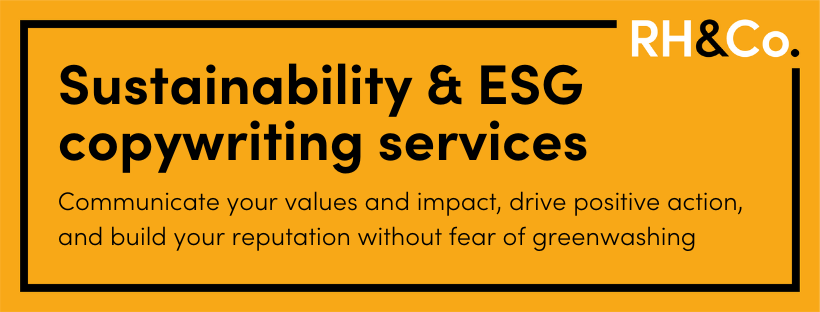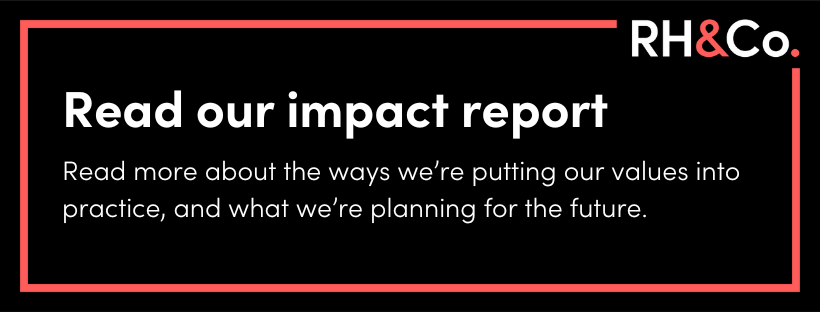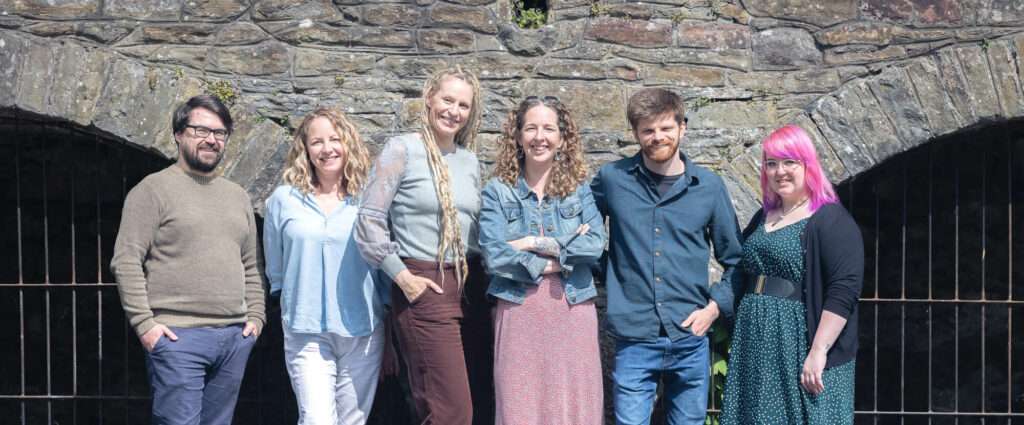

How to create an impact report with impact
If you want to be taken seriously for your ESG and sustainability commitments or your social impact, sooner or later you’re going to need to pull back the curtain on what you’re achieving.
Enter the impact report. It’s a document that will be familiar to any B Corp, non-profit or company that has grown to the point where it needs to disclose its impact by law.
TL:DR
- Different types of impact report
- Business impact reports vs charity impact reports
- How to create an impact report with impact
- Who do you need to write an impact report
Different types of impact report
There are many types of impact report, addressing different stakeholders and concerns:
- Charity annual reports
- Programme reports
- Environmental impact reports
- Social impact reports
- Health impact reports
- B Corp impact reports
- Modern slavery statements
- Gender pay gap reports
In and of themselves, these reports can have great value for benchmarking and tracking progress in an organisation. That’s not all though. With the right thinking and narrative behind it, these reports can create an impact that’s all their own.
Business impact reports vs. charity impact reports
The fundamental difference between business and charity impact reports is that of stakes.
A non-profit’s impact report is justifying its existence. It needs to say, “Donors, this is why you should keep donating. This is what your partnership has accomplished. Here is the evidence this organisation is making a difference in the world.”
A business impact report, meanwhile, is evidencing its ethics. It’s shining a light on the impact – positive and negative – that the company has on the environment and / or other stakeholders.
For a business, the stakes will rise or fall depending on several factors:
- Positioning of the business. If a company has built its brand around a cause – for instance, slave-free chocolate or carbon-free clothing – it will attract more scrutiny, whether that be from buyers, regulators such as the FCA, or journalists.
- Stakeholders. If a company’s partners, investors, and clients are evaluating their own ESG-credentials, they’ll want to know more about those they do business with. Also, if a company works in or with regions where human rights or conservation violations are high risk, it’s all the more important to be meticulous.
- Industry and growth stage. If you’re a small company in an industry not known for its impact reports, the fact that you’re creating an impact report at all will speak to your audience. If you’re a multinational FMCG, there will be more regulatory and stakeholder pressure to disclose a greater depth of information and take bolder action.
Even if the stakes are low, that’s not to say your impact report can’t have an impact in and of itself. It can be an invitation to employees, partners or other stakeholders to go on the sustainability journey with you, or it can challenge others in your industry to take bolder action. With the right narrative behind it, it can become a key milestone in your organisation’s story.
How to create impact with your report
If you’re primarily creating an impact report because you have to do it, you risk overlooking the value it can bring to your organisation. When it’s firing on all cylinders, an impact report can achieve a whole lot more than compliance. So how do you make sure yours delivers on all fronts?
1) Make sure your impact is instantly clear and evident
Outcomes:
- Deepen trust with stakeholders
- Stand up to scrutiny
In an age of greenwashing and greenhushing, an impact report will stand out if it’s candid and clear. It’s all too easy for an organisation to create an impact report that obscures the important details with vague statements, commitments and a showcase of non-critical action. But a report that is aware of its audience and speaks honestly to what they care about will build a better brand reputation.
If in doubt, focus on the outcomes to your actions rather than the actions themselves. Charities are typically great at this. They know if there is no qualitative or quantitative measure of impact, there is little point in reporting the action. For instance, don’t only say you launched a new D&I committee, show how that committee is already shaping your organisation’s policies and processes.

2) Weave smaller stories into a wider narrative
Outcomes:
- Win over the fence sitters
- Give your audience a reason to stay invested
The story you tell through your impact report can also be a swing factor for people looking for reasons to become a donor, stay investing, keep partnering, renew their membership, or continue a client-supplier relationship.
That’s not to say your report should advertise your sustainable brilliance (unless you really can justify it), but you can showcase how your company is learning, facing up to its challenges, and building a future that fence sitters will want to be a part of.
Personal stories are key here. This might involve a case study demonstrating how your partners are working to protect mangrove forests, or interviews with the people impacted by the changes you’ve made to your health programme, or the small business owners your direct trade is supporting. Personal stories will make a statistic like “we supported our NGO partner with 352 pro bono hours” far more meaningful to everyone reading it.
3) Don’t leave it all in the report – spread the message
Outcomes:
- Attract new leads and build your reputation
- Motivate your team, brand advocates, and volunteers
Depending on the content of your report, you may also be able to use its quotes, case studies and statistics in your marketing campaigns. Not everyone will read the full impact report, but if you snip parts of it up into social posts, internal comms, executive summaries, emails and so on, your message can go far further.
If your comms paint a clear picture, your team, brand advocates and volunteers are also more likely to stay loyal to your cause. When they see what they’re contributing to, it can put fresh wind in their sails.
Who do you need to write an effective impact report?
The answer to this question will depend a little on the scale of your operations and the stakes involved. If you’re a sole-trader, for instance, you could technically have a go at creating the whole report yourself.
That said, if the stakes are higher, you’re unsure of where to start, or you want your report to have the greatest impact possible, you might want to make use of the following:
1) Sustainability & ESG consultants
If you’re a scaling company new to the annual report process, you’re not sure which ESG or sustainability framework to use (GRI, TCFD, SBTi, IRIS+, etc.) or you’re aware that your data collection has had too many gaps in the past, it can be helpful to work with a sustainability consultant.
A consultant – or indeed an internal ESG and sustainability expert – can help you to understand what companies, investors and regulators will want to see. They can also facilitate stakeholder workshops to help map out the scope of what you should be reporting on, and how you can collect and present the data in a responsible way.

2) Subject matter experts
No organisation can create an effective impact report without contributions from people in charge of key areas. This might involve consulting with the professors in charge of key research, or receiving full case studies written by your technical team. You can also bring in the voices of external experts and partners to provide a broader perspective.
If parts of your impact report are written by subject matter experts, you’ll probably need to edit the tone of voice for the sake of consistency. If your wider audience is non-specialist, you may need to simplify some of the language too, without losing the nuance that specialist readers will expect.
To learn more about how to do this, see our guide to involving experts in content creation.
3) Content strategists and writers
Sustainability and ESG content specialists like RH&Co will ensure your report not only adheres to regulatory and ethical standards but that it also resonates with your audience on an emotional level – both line by line, and as a whole document.
We can help you to answer questions like: What’s the wider story we’re telling as an organisation? How can this impact report build momentum for our brand or cause? How can we launch this report as part of a wider campaign that attracts new members, hires, donors or clients?
In other words, how can we ensure that, when we launch this impact report, it actually makes an impact?
At RH&Co, we’ve helped shape impact reports for global charities and nationwide non-profits like the AHSN Network and Animal Free Research UK, as well as for B Corp businesses like BaseKit. We also launched our very own impact report in 2023. To learn more about how we can support you with your impact report, don’t hesitate to get in touch.
Back to hompeage








